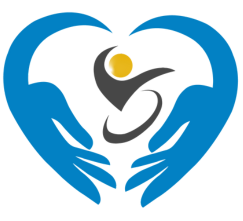
As part of its ongoing campaign for the upcoming International Day of People with Disability, Tender Loving Care Disability Services releases a series of articles aiming to bring awareness to different disabilities, shedding light on the individuals we serve and the reasons why we remain dedicated to their care.
For this article, we discuss Autism Spectrum Disorder.
Get to Know About Autism Spectrum Disorder
Autism Spectrum Disorder (ASD) is a neurodevelopmental condition characterised by difficulties in social interaction, communication, and repetitive behaviours. Its origin remains intricate, influenced by a complex interplay of genetic predispositions and environmental factors.
Within Australia, ASD affects an estimated 1 in 70 individuals, underscoring its prevalence and impact within the community. Early detection is pivotal, with signs often recognisable as early as infancy, enabling timely interventions tailored to the individual’s needs.
Recognising the significance of early intervention, the National Disability Insurance Scheme (NDIS) in Australia offers support for those diagnosed with ASD. This comprehensive program provides access to a wide range of therapeutic interventions, specialised services, and personalised assistance aimed at addressing the unique needs of everyone along the spectrum.

Characteristics of People with ASD
Autism Spectrum Disorder refers to a range of conditions affecting social interaction, communication, and behaviour. Below are some key characteristics associated with ASD, showing how it can manifest differently.
Social Communication and Interaction Skills:
- Difficulty maintaining eye contact
- Lack of response to name by nine months of age
- Inability to express facial expressions like happiness, sadness, anger, etc., by nine months of age
- Limited engagement in simple interactive games like pat-a-cake by 12 months of age
- Few or no use of gestures by 12 months of age (e.g., waving goodbye)
- Lack of sharing interests with others by 15 months of age (e.g., not showing objects of interest)
- Absence of pointing to indicate something interesting by 18 months of age
- Failure to notice when others are distressed by 24 months of age
- Inability to engage with other children in play by 36 months of age
- Lack of imaginative play by pretending to be someone else (e.g., a teacher or superhero) during play by 48 months of age
- No singing, dancing, or performing for others by 60 months of age
Restrictive or Repetitive Behaviours and Interests:
- Preference for lining up toys or objects and distress when the order is changed
- Repeating words or phrases repetitively (called Echolalia)
- Consistent play patterns with toys
- Focus on specific parts of objects (e.g., fixation on wheels)
- Distress caused by minor changes
- Intense fixation on particular interests
- Adherence to specific routines
- Physical behaviours like hand flapping, body rocking, or spinning in circles
- Unusual reactions to sensory stimuli (e.g., sound, smell, taste, appearance, texture)
Other Associated Characteristics:
- Delayed language, movement, or cognitive skills
- Hyperactive, impulsive, and/or inattentive behaviour
- Epilepsy or seizure disorders, in some cases
- Unusual eating and sleeping patterns
- Gastrointestinal issues like constipation
- Atypical emotional reactions or mood swings
- Anxiety, stress, or excessive worrying
- Unusual fear responses or lack thereof
Please note that not all individuals diagnosed with ASD may exhibit all these behaviours, and these characteristics may vary significantly among individuals.

Levels of ASD
In the previous version of the Diagnostic and Statistical Manual of Mental Disorders (DSM-4), autism had distinct categories like Autistic Disorder, Asperger’s Disorder, and PDD-NOS (Pervasive Developmental Disorder Not Otherwise Specified). However, in the revised DSM-5 introduced in 2013, these separate categories were combined into a single spectrum, aiming for a more comprehensive understanding of autism. This change removed individual labels, recognising autism as a diverse spectrum of expressions, assisting in more detailed diagnoses and a better grasp of this complex condition.
Within this unified spectrum, autism is categorised into three distinct levels based on the severity of symptoms and the amount of support needed in daily life.
- Level 1 Autism Spectrum Disorder: Recognised as high-functioning autism, individuals with Level 1 ASD require minimal support, often communicating verbally but facing challenges in social interactions and transitions.
- Level 2 Autism Spectrum Disorder: Positioned between Level 1 and Level 3, individuals with Level 2 ASD need substantial support, exhibit more noticeable stimming behaviours (sometimes called restricted or repetitive behaviours) and face communication and social skill difficulties.
- Level 3 Autism Spectrum Disorder: Indicating severe autism, Level 3 ASD necessitates substantial support, often involving minimal or non-verbal communication, intense stimming behaviours, and challenging behaviours such as frequent meltdowns or self-harm.
Creating an Inclusive Environment for People with Autism Spectrum Disorder
It’s important to create an inclusive environment for individuals with ASD to ensure their comfort and participation. Building such an environment positively impacts their well-being and engagement.
To create an inclusive environment:
- Provide clear communication and support.
- Embrace diversity and offer accommodations tailored to individual needs.
- Educate and raise awareness among peers and colleagues.

At Home
- Design a sensory-friendly environment within the home, incorporating elements such as soft lighting, comfortable seating, and minimal noise to accommodate diverse sensory needs.
- Establish structured routines and clear boundaries to provide a sense of predictability and security, utilising visual schedules or timers to assist in daily activities.
- Cultivate an open communication atmosphere and understanding by actively engaging in dialogue, acknowledging individual preferences, and respecting personal boundaries within the household.
- Implement sensory zoning by designing specific areas within the home to cater to various sensory needs, such as incorporating quiet corners, sensory-friendly lighting, or tangible stimulation stations.
- Utilise visual supports like visual schedules, pictorial instructions, or labelled storage containers to enhance predictability and aid communication.

At School
- Implement inclusive teaching strategies tailored to individual needs, such as visual aids, task organisers, or alternative communication methods to facilitate learning for students.
- Provide a supportive sensory environment by offering accommodations like noise-cancelling headphones, fidget tools, or flexible seating options to assist students in managing sensory sensitivities.
- Foster acceptance and understanding through structured activities promoting social interactions and empathy among classmates.
- Incorporate a visual schedule or a written outline of daily activities to aid transition times and provide a predictable routine for students.
- Offer a quiet space or a designated area where students can retreat to decompress or regulate sensory input when needed.

At the Office
- Offer workplace accommodations tailored to individual needs, such as flexible work hours, designated quiet areas, or adjusted workspace setups to support employees.
- Promote a workplace culture of inclusivity and understanding by organising workshops, training sessions, or awareness programs to educate colleagues about autism and foster an empathetic environment.
- Provide necessary resources and assistive technologies, including communication aids, specialised software, or job coaches to support employees in their roles.
- Develop clear and explicit workplace guidelines or instructions to help employees understand expectations and tasks effectively.
- Implement a buddy system or mentorship program pairing employees to offer support, guidance, and social integration within the workplace.

Tender Loving Care Disability Services showcases its commitment to workplace inclusivity through Frapp & Capp Coffee Shack. This initiative highlights the value placed on participants with disabilities as integral members of the workforce.
Where Do We Go From Here?
Understanding Autism Spectrum Disorder is essential for building inclusive communities that embrace compassion and support for individuals with diverse needs. This understanding fosters a more caring and empathetic society. This awareness forms the foundation for initiatives like the International Day of People with Disability. This significant day serves as a unifying platform, bringing together collective efforts toward achieving goals that prioritise the well-being and inclusion of individuals with disabilities.
The International Day of People with Disability underscores the importance of unity in action, aiming to fulfil the Sustainable Development Goals for, with, and by individuals with disabilities. This initiative emphasises the need for collaboration, understanding, and support to create a world where everyone, regardless of ability, has equal opportunities, respect, and inclusion in society.
Together, #WeAllCan create a world that celebrates diversity and ensures equal opportunities for individuals with disabilities.
REFERENCES:
- Australian Institute for Teaching and School Leadership. (n.d.). “Spotlight: Inclusive education - teaching students with disability.” Retrieved from https://www.aitsl.edu.au/.
- JobAccess. (2016). “Accessibility Checklist for Employers.” Retrieved from https://www.jobaccess.gov.au/.
- International Day of People with Disability. (n.d.). About IDPWD. Retrieved from https://www.idpwd.com.au/.
- Centers for Disease Control and Prevention. (2022). “Signs and Symptoms of Autism Spectrum Disorder”. Retrieved from https://www.cdc.gov/.
- Behavioral Innovations. (2023). “The Types and Levels of Autism Spectrum Disorder”. Retrieved from https://behavioral-innovations.com/.








